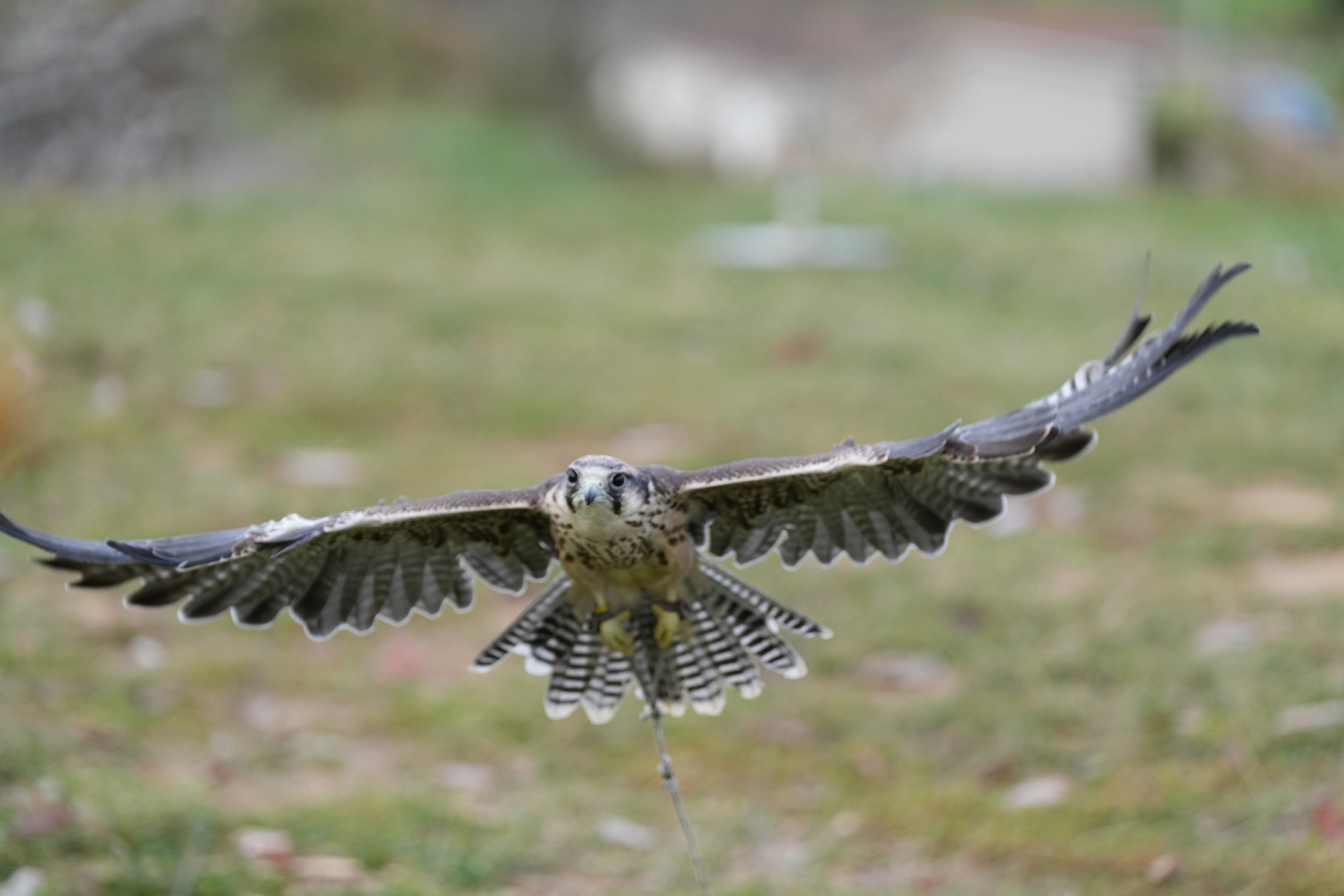
Lanner Falcon
(Falco Biarmicus)
The Lanner Falcon (Falco biarmicus) is a medium-sized bird of prey known for its speed, agility, and striking appearance. Native to Africa, with populations also found in parts of southeastern Europe and western Asia, this falcon thrives in open habitats like savannas, grasslands, and semi-desert regions, often nesting on cliffs or in tall trees. It has a slender body, long pointed wings, and a distinctive facial pattern with a pale underside and darker back. The Lanner Falcon primarily feeds on birds, but it also hunts small mammals, reptiles, and insects, often using cooperative hunting techniques with a mate. Though it faces threats from habitat loss and human activity, the species is currently listed as Least Concern by the IUCN due to its wide range and stable population. Known for its adaptability and hunting prowess, the Lanner Falcon plays an important role in controlling prey populations within its ecosystem.
IUCN Status: Least Concern
Range: Africa (also parts of southeastern Europe and western Asia)
Habitat: Open habitats like savannas, grasslands, deserts, and semi-desert areas. They prefer regions with scattered trees or cliffs for nesting.
Lifespan: Up to 15-20 years in the wild; can live longer in captivity.
Size: 43–50 cm (17–20 inches) in length, with a wingspan of 95–105 cm (37–41 inches).
Diet: Primarily birds, but they’ll also hunt small mammals, reptiles, and insects. They often hunt in pairs, using coordinated strategies.
Clutch Size: 2-4 eggs
Incubation: About 31 days
Built for Speed
Falcons are masterfully designed for speed. Lanner falcons can reach velocities of approximately 90 mph, while peregrine falcons, the fastest animals on the planet, can achieve speeds of up to 240 mph during their iconic stoop. Flying and hunting at such extraordinary speeds require exceptional & intentional design.
-
The Lanner Falcon boasts an aerodynamic design that enhances its speed, agility, and precision in flight. Its long, pointed wings reduce air resistance, allowing for swift, sustained flights and sudden bursts of speed when chasing prey. Unlike the Peregrine Falcon, which relies on high-altitude stoops, the Lanner Falcon excels at fast, level flight, maneuvering effortlessly through open landscapes. Its sleek, streamlined body minimizes drag, while strong, muscular wings provide powerful thrust and control. The tail is relatively long and narrow, acting as a rudder to aid in sharp turns and quick directional changes during pursuit.
-
The tubercles in a falcon’s nostrils are a remarkable design feature that plays a crucial role in high-speed flight. These small, cone-shaped bony structures help regulate airflow into the bird’s respiratory system, preventing turbulence when diving at high speeds. As air rushes toward the falcon’s nostrils during flight, the tubercles break up and slow down the airflow, ensuring a steady supply of oxygen even during rapid pursuits. This design is similar to the airflow management systems used in jet engines, highlighting an incredible example of biomimicry in nature. Without these tubercles, the intense pressure changes during high-speed flight could overwhelm the bird’s respiratory system, reducing its efficiency or possibly even killing the bird. This specialized adaptation allows falcons, including the Lanner Falcon, to maintain peak performance while executing their swift, precise aerial maneuvers.
-
The nictitating membrane in falcons is a specialized, semi-transparent third eyelid that plays a vital role in protecting and maintaining the health of their eyes. This thin, flexible membrane sweeps horizontally across the eye like a windshield wiper, clearing away dust, debris, and moisture without obstructing vision. For falcons, which rely heavily on keen eyesight for hunting, this feature is essential, especially during high-speed dives or when flying through rough environments like deserts and grasslands. The nictitating membrane also provides critical protection against wind resistance and potential injury from struggling prey. Additionally, it helps keep the eye hydrated and free of contaminants, ensuring the falcon maintains its sharp focus while pursuing prey. This built-in protective system enhances the bird’s ability to execute precise, high-speed aerial maneuvers with unmatched efficiency.




